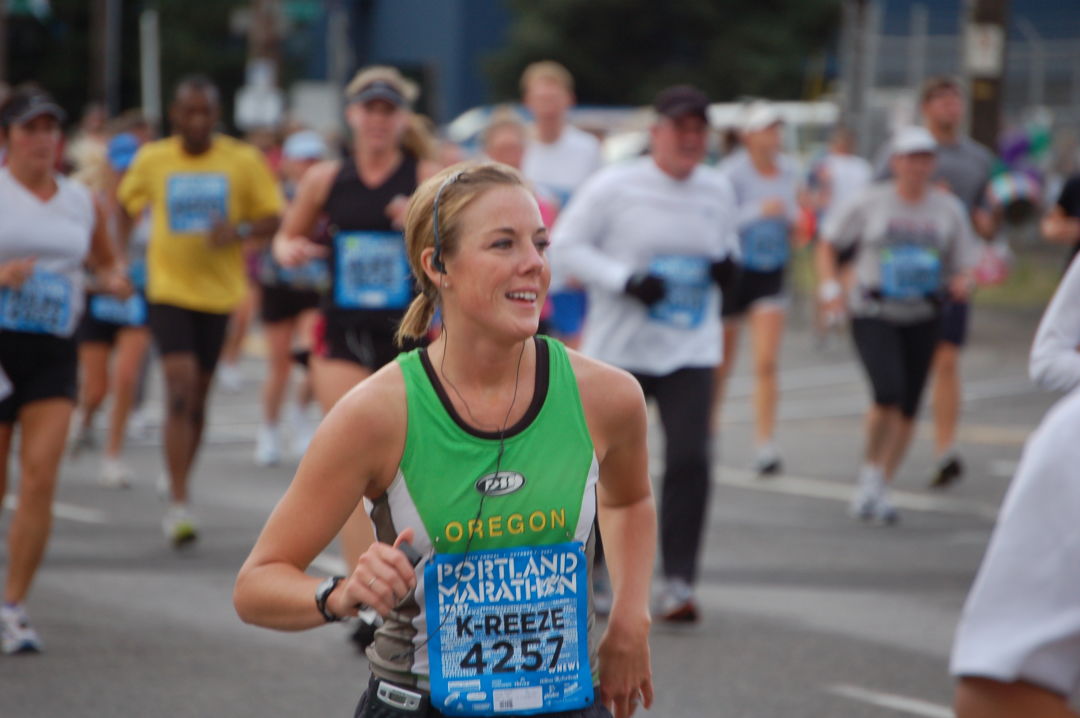FIT CITY
12 Tips for Crushing Your First 5k, Half Marathon, or Anything in Between
Follow Foot Traffic owner Sean Rivers’s words of wisdom as you chase new running goals.

Image: Shutterstock
Whether you’ve been running five miles a day for a decade or you haven’t ever purchased a pair of running shoes, leveling up to a new race distance can be awfully intimidating. But with the expert advice of Foot Traffic co-founder Sean Rivers ringing in your ears, you’ll soon be running farther and faster than ever before—and having a blast, to boot.
TRAINING
- Don’t try to do it all at once. You might be able to reach the finish line on adrenaline and stubbornness alone, but that doesn’t mean it’s a good idea. Pick a race that’s at least three months away—ideally closer to six months—and find a training plan online that matches your goals.
- Don’t run every day—and definitely don’t increase your mileage every day! Your training plan should include one long, slow distance run that gets longer each week, as well as two to four shorter runs. Anything more than that, and you’re at serious risk for injury and burnout.
- Enjoying the process is crucial—so if running several days a week for a few months sounds utterly miserable, consider choosing a fitness goal that brings you more joy. There are plenty of ways to stay healthy!
- Stay hydrated. According to Rivers, there’s not usually a need to snack while running anything shorter than a marathon. Hydration, however, is key. To avoid symptoms like stomach troubles and dizziness, drink water spiked with electrolytes like Nuun anytime you run for more than an hour.
- Be patient with your body. Your knees and hips might ache. The route you crushed last week may feel extra challenging today. That’s all totally normal! Take care of yourself, rest when needed, and try again tomorrow.
- Give it three weeks. “If you can get through the first three weeks of training consistently, everything starts to get a little bit easier,” Rivers says. “But the first three weeks can be difficult as your body is adjusting to that different demand.” And doesn’t it take 21 days to make a habit?

Image: Flickr/Amy Goodman
RACING
- Choose a race that’s well-supported. You don’t necessarily need a live band performing at every milepost, but you do want a professionally organized operation on a certified course. (If you’re looking for a super flat first race, the Foot Traffic Flat in July is a great option, with distances from 5k to 26.2 miles.)
- Don’t be afraid. “I think one of the biggest fears for people going out for new distances is that they’re going to be last or they’re going to fail in some way,” Rivers says. “Once people realize that like 90 percent of people are in their same boat, people loosen up a little bit and have more fun.” That’s right—you’re not the only new racer on the course!
- Don’t try anything new on race day. We love trying new things, but when you’re heading to the big race, it’s best to stick to tried-and-true gear, snacks, and routines.
- Don’t get too pumped up. Adrenaline can trick you into starting at a speed that’s way faster than your training pace; consciously calming yourself down at the starting line will help you avoid that fate. Rivers even suggests swapping out your EDM playlist for a few James Taylor tunes for the first mile or so.
- Aim for comfortable completion. “Don’t set any specific expectations other than finishing in a way that is comfortable for you,” Rivers advises. “If you get too focused on finishing in a certain time or a certain place, it, you’re setting yourself up for an unhappy experience, because there’s no way to know if you’ll be able to accomplish that time your first time.”
- Believe in yourself. “You can accomplish a lot more than you give yourself credit for,” Rivers says. “We’re all capable of this. Just be patient.” We couldn’t agree more!




